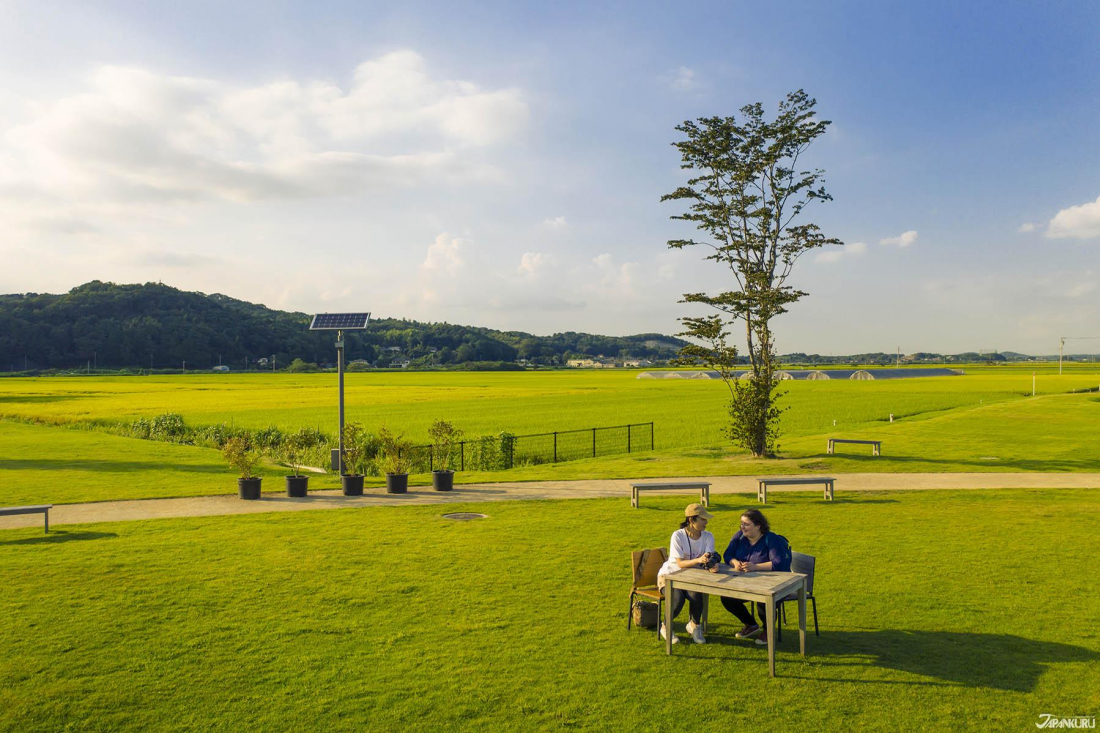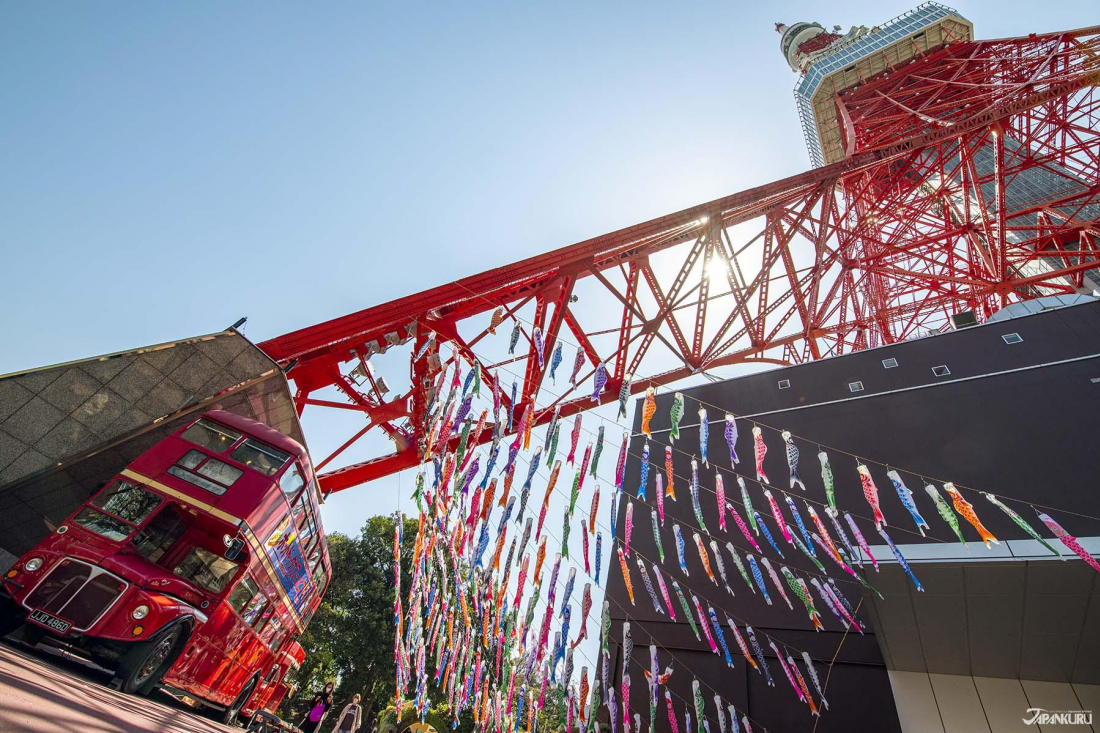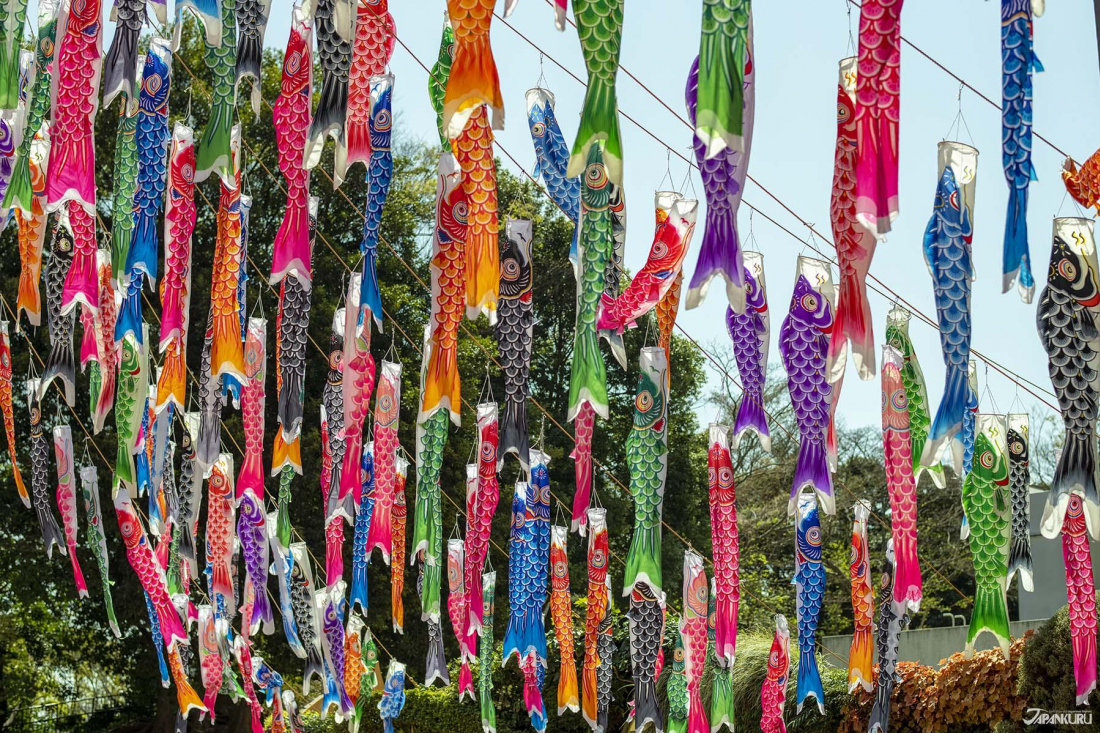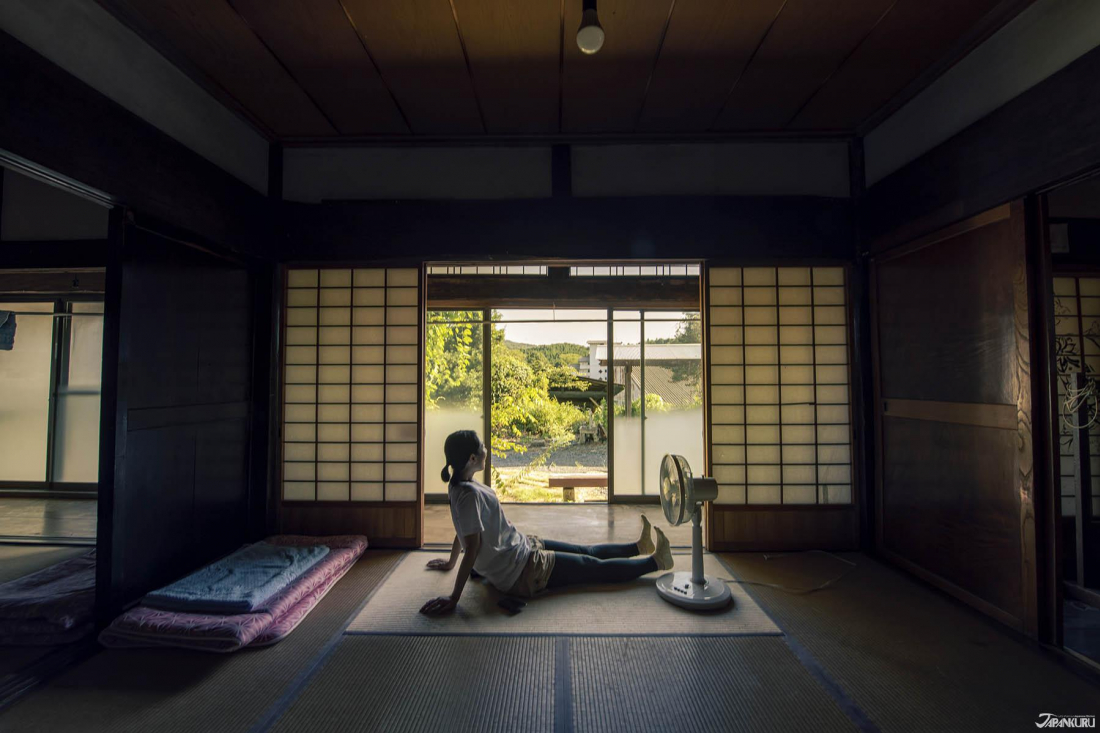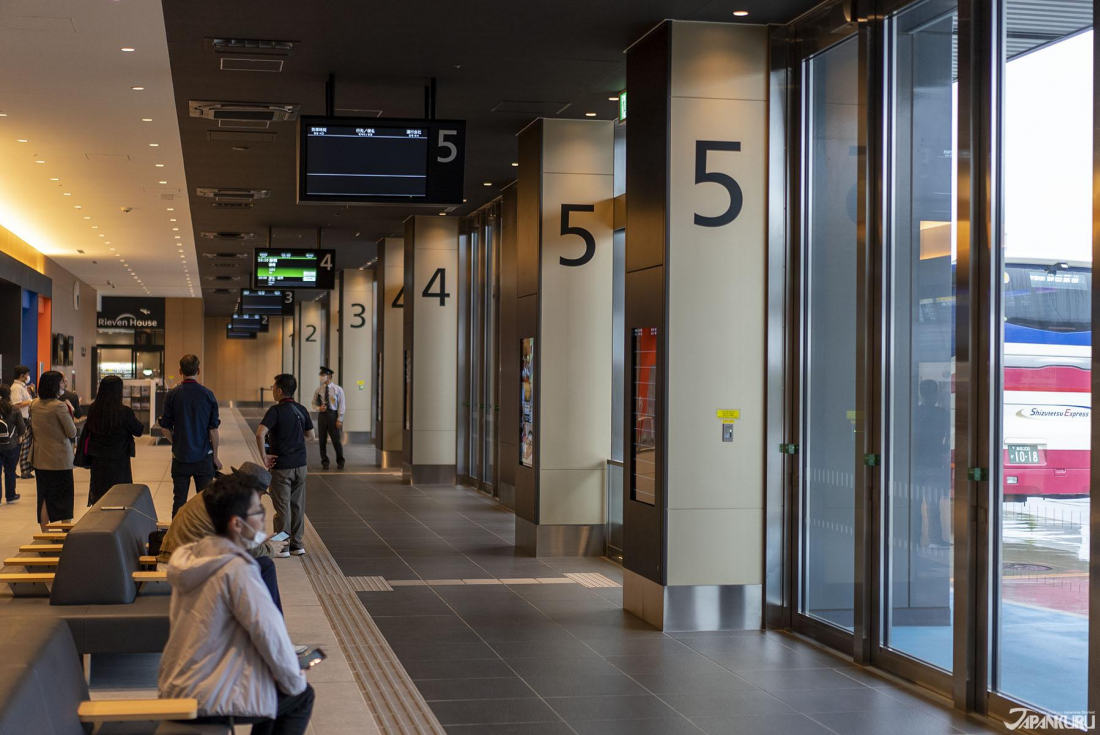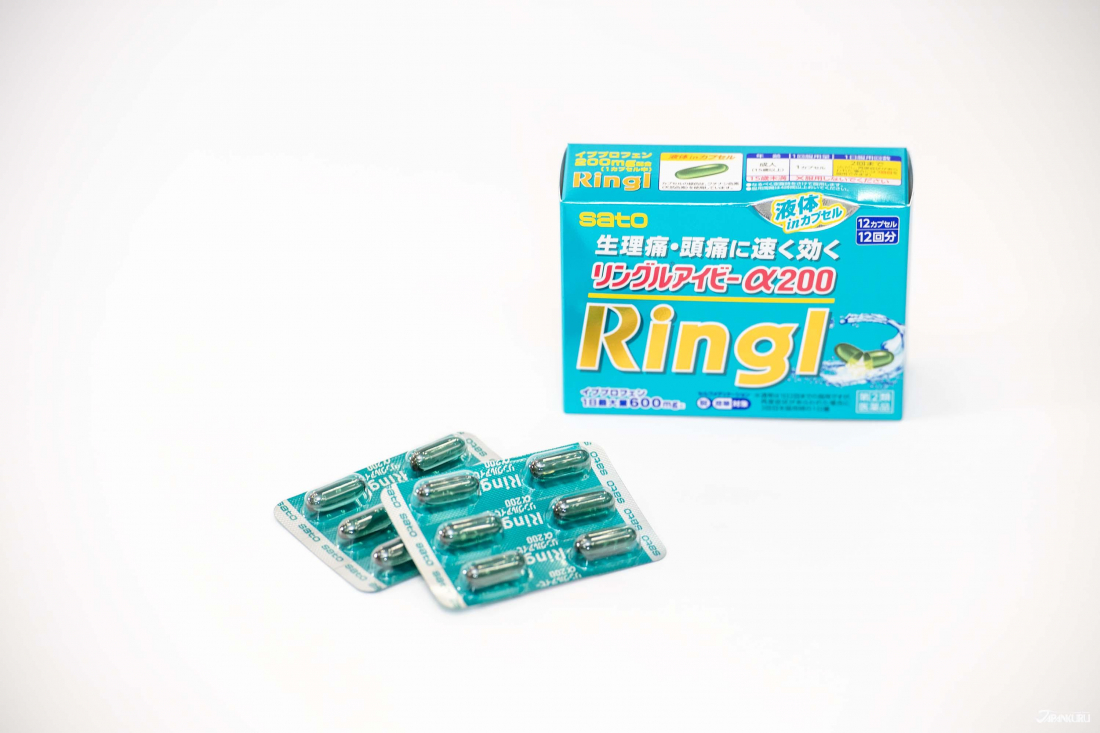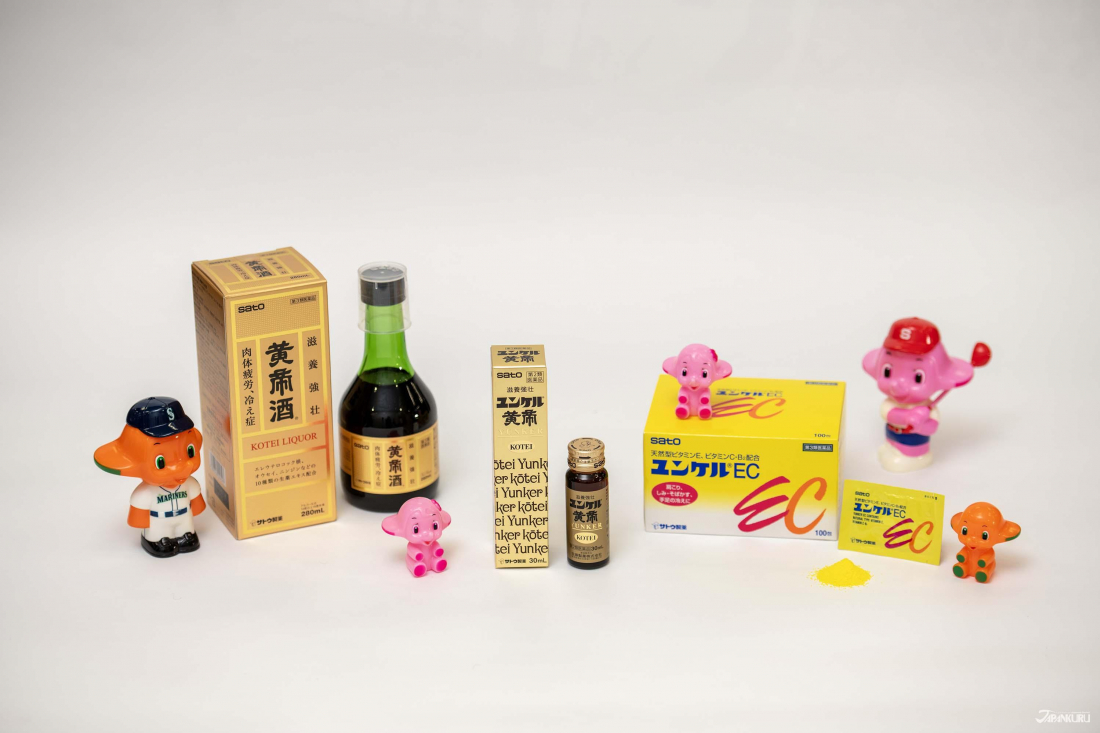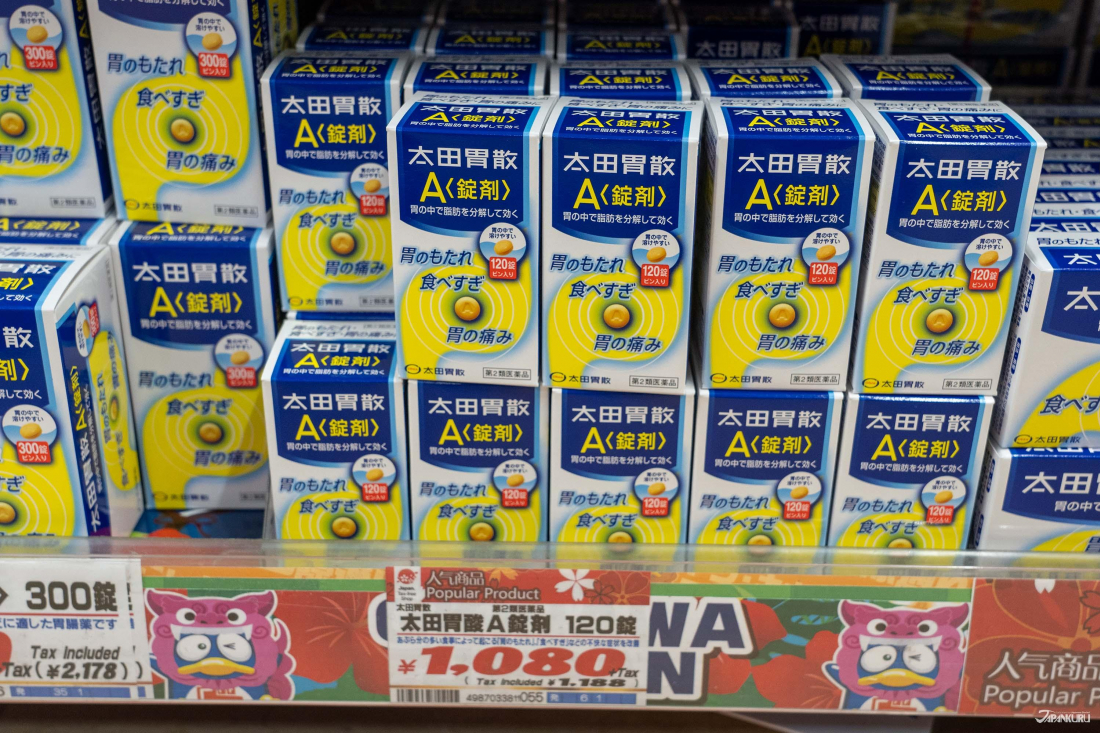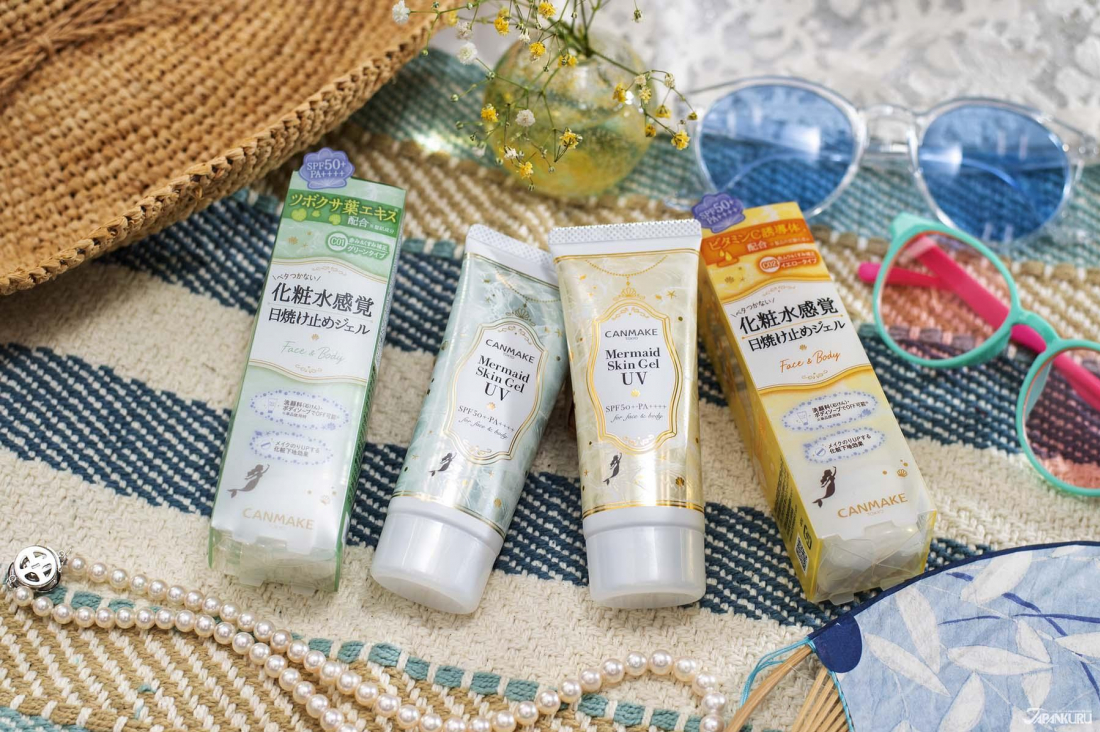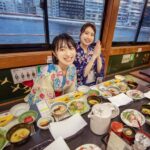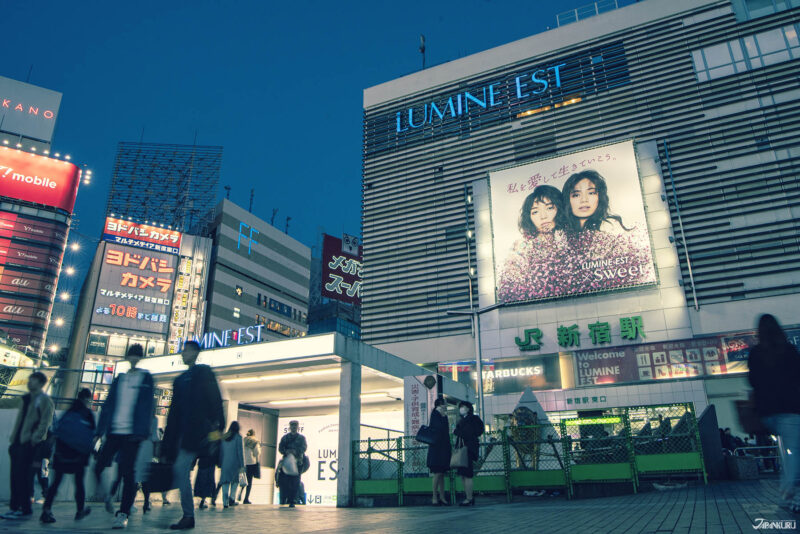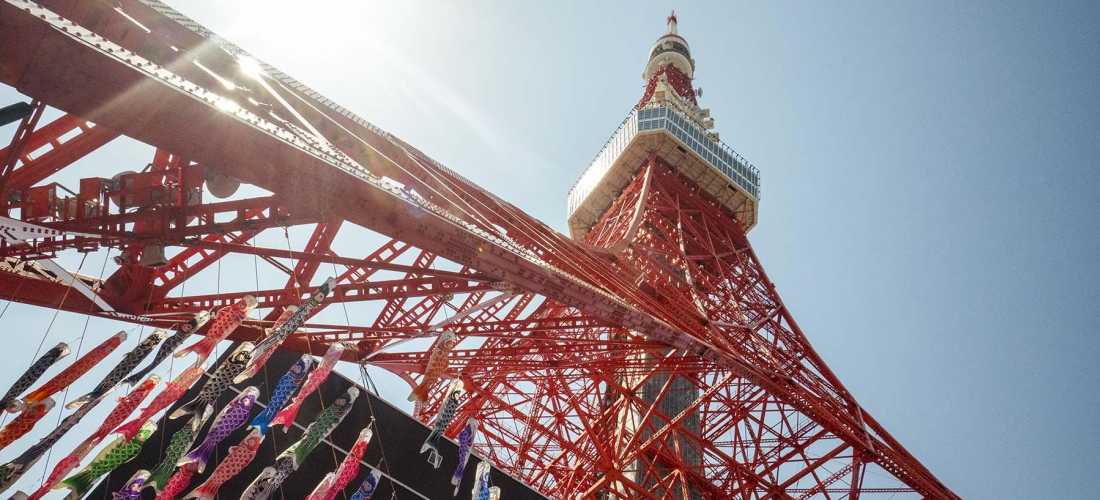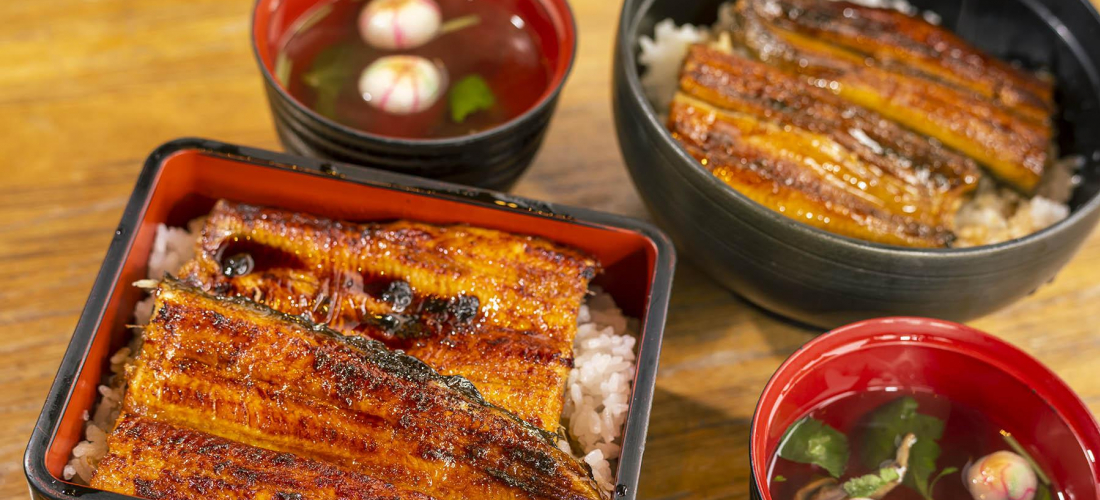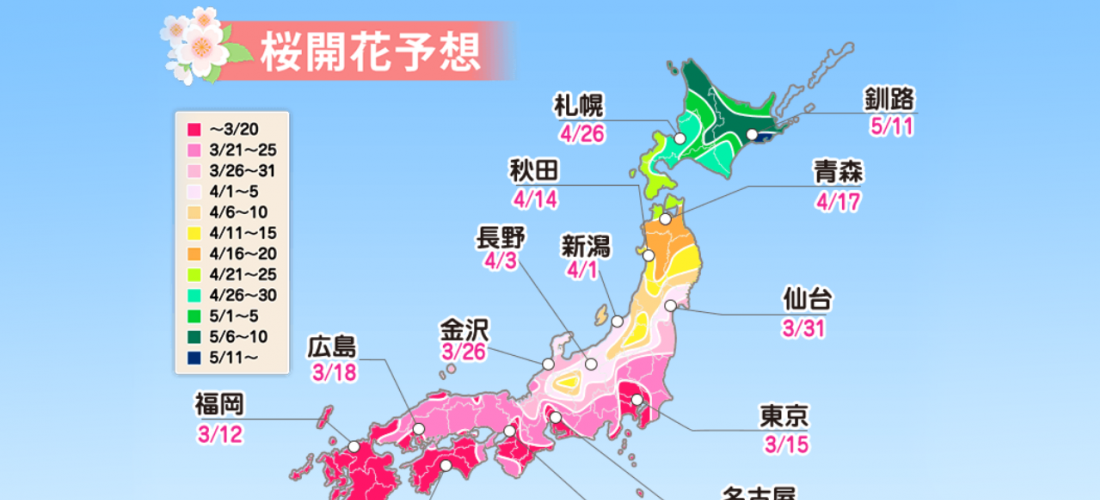
CONTENTS
From the end of April to early May every year, Japan’s Golden Week vacation period is a unique time to visit the country, so we’ve got some tips and recommendations for enjoying Japan when it’s at its busiest.
Golden Week, Japan’s Spring Break
While spring break is a common enough time to enjoy a nice vacation all around the world, nowhere does it quite like Japan, where the holiday period called Golden Week turns the country upside down for a week in late spring. The term Golden Week actually refers to a collection of different holidays that clump together at the end of April and beginning of May every year – one of the rare periods every year when Japan's millions of busy office workers are given permission to actually take more than a day off work. This long vacation period, generally lasting about a week, is truly a golden opportunity for the majority of Japanese workers, allowing busy people to relax, recuperate, and most of all, to travel. With huge numbers of domestic travelers packing the shinkansen and filling up hotels all over Japan, it's a crazy time for foreign visitors to see the country, but there's no denying the sunny golden weather Japan generally enjoys during Golden Week! If you want to enjoy your Golden Week visit to Japan, just make sure you know what you're getting into, do a little extra prep, and be ready to enjoy Japan side by side with the locals!
Japan’s Golden Week 2024 Schedule
Golden Week is a somewhat loose term for four public holidays in Japan, and since all of these holidays are determined by date and not day of the week, the actual length/configuration of the vacation period changes from year to year (and, to some extent, from person to person). Golden Week officially starts with Showa Day (honoring the birthday of the late Emperor Showa) on April 29th, and then goes on to include Constitution Memorial Day on May 3rd, Greenery Day (also, oddly, honoring the late Emperor Showa) on May 4th, and then finally Children's Day on May 5th. For Golden Week 2024, that means a three-day weekend plus another four-day weekend with three days of work/school in between. On years when the holidays line up like this, plenty of people take what they can get and enjoy the long weekends, but just as many people take advantage of the timing, use three days of paid leave (more generous workplaces/schools might even give everyone those days off), and take one long, luxurious spring vacation. This year Golden Week offers people around Japan a maximum of ten days of vacation, so it's no surprise that so many locals use the time for travel!
None of the four holidays that make up Golden Week are really big enough to inspire major celebrations, but there are a couple that you can enjoy during your trip! Children's Day is the most widely-celebrated holiday of the bunch, and the most obvious representation can be seen in the colorful strings of carp-shaped koinobori (鯉のぼり) streamers which are hung up all over the place in the period around Children's Day.
▶︎ Learn more about Children's Day here!
Travelers can also get in on Japan's Greenery Day celebrations! This holiday was created in honor of Emperor Showa's love of gardens and other green spaces, and when the weather cooperates, it's a great time of year to visit Japan's many parks and gardens. Join the crowds picnicking and lounging in the sun at the vast Yoyogi Park, or visit one of a handful of different municipal facilities that offer free entry on Greenery Day, like Koishikawa Botanical Garden, Hamarikyu Gardens, or even Ueno Zoo!
▶︎ Don't get confused when planning your Golden Week trip to Japan – Golden Week isn't just a translation of Japan's official name for the vacation days… Japan literally uses the English phrase "Golden Week" to refer to this spring holiday period. You'll also see plenty of places abbreviate the term and talk about "GW" instead.
What Is Japan Really Like During Golden Week?
Japan has three major holiday periods throughout the year: New Year's, Golden Week, and Bon Festival. Two out of the three (New Year's and Bon) are generally thought of as times when people "go home" and spend time with their families in their hometowns for important traditional holidays, which leaves Golden Week as the go-to vacation time for anyone looking to get away from it all and get some traveling done. Of course, with everyone traveling all at once, Japan gets pretty crazy, from the sightseeing spots to the roads and public transportation.
If you're planning to visit Japan any time from the end of April through early May, just know that everywhere you go will probably be a little busier than you'd expect. This is NOT the time for last-minute trips to Japan. Hotel rooms in popular tourist spots sell out months in advance, trains fill up and the shinkansen temporarily stops offering unreserved seats, and car rentals can be hard to get ahold of (the highways are packed anyway)! Even if you think you're planning a trip to a quiet little town, if your destination has any kind of reputation as a sightseeing destination, don't expect it to be so quaint and quiet during Golden Week. If you can enjoy the atmosphere and have fun as part of the crowd of domestic travelers, it's an interesting time to see Japan, but probably not the most convenient!
Our Favorite Tools for Enjoying Golden Week Travel
Golden Week is a wild time to visit Japan, but with a little bit of forethought and preparation, you can gather all the tools you might need to take care of yourself during this busy season, and make sure the trip is fun and not exhausting. These are a few of the products we like to make sure we have on hand before heading out for a Golden Week trip!
Medicine Cabinet Staples
What's worse than getting sick on vacation? It's a pretty frustrating situation, but sometimes it can't be helped, so all you can do is damage control! If you didn't bring any of your go-to medicines with you to Japan, you can of course get basic over-the-counter meds at any drugstore! There's often a pharmacist (or at least a member of staff) who can help you find what you need, but these are a few popular options.
For basic pain relief, Ringl is a Japanese brand of ibuprofen (like Advil or Motrin), so it works great on headaches, period cramps, sore throats, and other aches and pains. Definitely a good one to keep on hand!
Sightseers in Japan often talk about how they walk more every single day they're here than they ever have back home. Travelers in Japan do a lot of walking. So when the fatigue starts to build up and you feel like you can't quite keep it up anymore, it might be time to turn to some of Japan's unique "health tonics." This series of products from Yunkel is said to restore vitality! You'll certainly feel something after downing the uniquely flavored tonics.
Japan is known for being impeccably clean, so your chances of getting food poisoning are low, but that doesn't mean your stomach won't get upset at the change in schedule and diet, especially if you're gorging on rich bowls of ramen all day long. One of Japan's go-to brands for digestive medicines and antacids is Ohta-Isan, and one or another of their products will probably leave your stomach feeling a little less miserable.
Sun Protection
Whether you call it late spring or early summer, Golden Week generally marks the start of Japan's hot, sunny season, so you'll want to make sure you're well prepared to keep your skin protected even when spending time outdoors, so you can concentrate on having fun instead. Japan has a reputation for making some of the best sunscreens in the world, so it makes sense to pick some up while you're here! Canmake's Mermaid Skin UV Gel glides onto the skin and leaves a smooth, non-sticky finish, good on the face and the body. They also make slightly tinted versions, to even out different skin tones.
Your Beverage of Choice
The height of Japan's summer heat doesn't come until much later in the year, but with all the hustle and bustle going on during Golden Week, it can be easy to forget one of the most important tips for enjoying any kind of travel: stay hydrated. Between the abundant vending machines and convenience stores, there are plenty of places to pick up whatever beverage you choose, but Japan's ready-made coffee drinks are our favorite option for early travel mornings and breezy Golden Week picnics alike. Mt. Rainier is one of the most popular brands, and they've been offering a wider range of flavors (like oat and soy milk) in recent years too.
Stay hydrated, keep caffeinated, and don't forget all your other travel necessities – Golden Week in Japan is one wild ride, but the warm spring weather is calling your name!
For more info and updates from Japan, check Japankuru for new articles, and don't forget to follow us on X (Twitter), Instagram, and Facebook!
Details
NAME:Golden Week (ゴールデンウィーク)
PROFILE
Stories from Japankuru's Taiwanese staff.
COMMENT
FEATURED MEDIA
VIEW MORE
・The new Tokyo flagship for Volcom Japan is a center for all things skateboarding, street fashion, art, and culture, all in the heart of Shibuya! ・Volcom日本旗艦店東京澀谷登場 本格派滑板街頭潮流藝文新據點 #Volcom #japankuru #shibuya #日本購物 #日本潮流 #日本街頭時尚 #澀谷 #東京購物 #東京購物推薦 #東京潮店 #澀谷潮店 #滑板 #雪板 #衝浪 #볼컴 #시부야

Which snacks make the best Japanese souvenirs?~ Jaga Pirika ~ 일본과자 선물 뭐하지?~자가피리카 편~ #pr #calbee #jagapokkuru #japanesesnacks #japanesefood #japanesesouvenir #japantravel #japantrip #naritaairport #hokkaido #나리타국제공항 #일본여행선물 #흔하지않은기념품 #일본쇼핑리스트 #일본과자추천 #고구마과자 #일본간식추천 #일본면세점쇼핑 #개별포장 #일본감자칩 #도쿄나리타공항면세점 #현지인추천 #일본여행 #일본기념품리스트 #자가포쿠루 #자가피리카

Asakusa's Sanja Matsuri, one of the biggest festivals in all of Tokyo, is almost here! Make sure you check out the festival route so you don't miss all the festivities this May. #asakusa #sanjafestival #sanjamatsuri #asakusashrine #sensoji #sensojitemple #japanesefestival #shintoshrine #japaneseculture #tokyo #tokyotrip #tokyotravel #asakusasightseeing #matsuri #japantrip #japantravel #springinjapan #tokyotravel #japankuru #산자마츠리 #아사쿠사 #일본마츠리 #일본여행 #일본5월

Odaiba's DiverCity Tokyo Plaza is home to the famous real-size 20m-tall Unicorn Gundam, and the popular shopping center has even more Gundam on the inside! Check out the Gundam Base Tokyo on the 7th floor for shelves upon shelves of Gunpla, and the Gundam Base Tokyo Annex on the 2nd floor for cool anime merchandise. Both shops have tons of limited-edition items! #pr #odaiba #tokyo #tokyotrip #japantrip #japantravel #PR #divercity #divercitytokyoplaza #tokyoshopping #gundam #unicorngundam #gundambasetokyo #anime #otaku #gunpla #japankuru #오다이바 #다이바시티도쿄 #오다이바건담 #건담 #일본건담 #건프라 #건담베이스도쿄

Evangelion, in miniature!? Tokyo's SMALL WORLDS Miniature Museum is actually a must-see for anime lovers, thanks to the tiny Evangelion Hangar and Tokyo-III... plus a whole universe of other scenes both real and fictional. #smallworlds #smallworldstokyo #tokyotrip #tokyotravel #evangelion #eva #anime #miniature #miniatures #animefigure #japantrip #japantravel #에반게리온 #스몰월드 #에반겔리온 #スモールワールズ #오다이바 #아리아케

Have you sat down for a snack at Sumida Aquarium yet? This aquarium next to Tokyo Skytree is known for its penguins and garden eels, but we can't get enough of their cute snacks! There are lots of good seats around the aquarium, too, so it almost feels like one big cafe. 🐧 • Find out more at Japankuru.com! (Link in bio.) • #japankuru #sumidaaquarium #skytree #tokyoskytree #solamachi #sumida #tokyo #tokyotrip #tokyotravel #aquarium #japanesesweets #themecafe #すみだ水族館 #Japan #日本 #일본 #Japon #ญี่ปุ่น #Japão #япония #japantravel #日本旅行 #日本旅遊 #japan_of_insta #japantrip #traveljapan #japan🇯🇵 #igerstokyo #explorejapan

For anime fans, the Evangelion areas at Small Worlds Miniature Museum are a must see! The tiny miniature people in the Evangelion Hangar look like ants beneath the moving Unit-01, Unit-00, and Unit-02! And over in Tokyo-III, characters like Shinji, Rei, and Katsuragi live life on a miniature scale. #odaiba #tokyo #tokyotrip #japantrip #japantravel #ariake #smallworlds #miniaturemuseum #smallworldstokyo #tokyotravel #evangelion #eva #anime #miniature #miniatures #animefigure #japankuru #스몰월드 #에반게리온 #오다이바 #오다이바관광 #오다이바스몰월드 #미니어쳐

